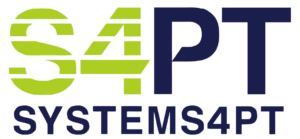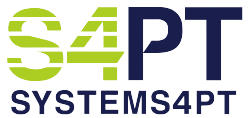
Managing Patient Flow
Patient flow management is paramount to ensuring high-quality services in outpatient physical therapy clinics. Furthermore, effective patient flow management is pivotal in ensuring patients receive timely and efficient care. To meet these demands, outpatient physical therapy clinics must implement well-organized and efficient systems for managing patient flow. Consequently, this article will explore strategies for effectively managing patient flow in a busy outpatient physical therapy clinic.
Appointment Scheduling
Appointment scheduling is the first step in managing patient flow in a busy outpatient physical therapy clinic. Efficient appointment scheduling ensures that patients are seen promptly and therapists have adequate time to complete each patient’s treatment plan. Without a doubt, the best strategy for effective appointment scheduling is to use an EMR (Electronic Medical Record) with an integrated scheduling platform that tracks patients to ensure no interruptions to their care. Furthermore, electronic scheduling systems can also send appointment reminders to patients, reducing the likelihood of no-shows and last-minute cancellations.
Patient Check-In
Patient check-in is the second step in managing patient flow in a busy outpatient physical therapy clinic. A well-designed check-in process can streamline the patient flow and reduce wait times. Take advantage of self-check-in systems that allow patients to complete their assessment forms ahead of time or electronically upon arrival. When your patient check-in and EMR are integrated, these systems can collect patient medical information, help maintain Medicare compliance, and notify therapists of the patient’s arrival.
Patient Assessment
Effective patient assessment is the third step in managing patient flow in a busy outpatient physical therapy clinic. A comprehensive patient assessment helps therapists determine the appropriate treatment plan for each patient.
Systems 4PT features built-in patient assessment tools derived from the most common industry-standard tests. As a result, these assessment tools can help therapists identify areas of concern and track progress over time, as well as improve communication between therapists and other healthcare professionals involved in the patient’s care.
Treatment Assessment
Treatment planning is the fourth step in managing patient flow in a busy outpatient physical therapy clinic. A well-designed treatment plan ensures that patients receive appropriate care and that therapists use their time efficiently. Creating treatment plan templates can help therapists organize their treatment goals, interventions, and progress notes and track patient progress based on the use of those different templates
Physical therapists should be able to prioritize spending more time with patients and less time documenting on the computer and provide hands-on care and support to patients. Systems 4PT’s Documentation is equipped with a Treatment Plan Template Library featuring pre-built templates and the ability to create your own based on your practice preferences so Physical Therapists spend less time on documentation reducing the risk of burnout, improving job satisfaction, and leading to better patient outcomes.
Patient Education
Educating your patients is the fifth step in managing patient flow in a busy outpatient physical therapy clinic. Patients must understand their condition, treatment plan, and how to manage their symptoms. Visual aids, such as pictures, diagrams, videos, and models, are powerful tools that can enhance physical therapy’s communication and educational process. They offer a visual representation of information, which can be particularly helpful for patients who struggle with auditory or written information.
Physical Therapy patients often need to understand complex information such as the anatomy of their condition, the causes of their symptoms, the recommended treatment plan, and the exercises they need to do. Visual aids can simplify and clarify this information by presenting it in a more tangible and relatable format. For example, a picture of the human body with labels highlighting the affected areas can help patients better understand the location and nature of their condition. Using diagrams, stretches, and exercises can help patients perform them more accurately and retain the steps/moves more easily.
Managing patient flow is critical to healthcare delivery in a busy outpatient physical therapy clinic. Effective patient flow management requires efficient appointment scheduling, streamlined patient check-in, comprehensive patient assessment, well-designed treatment planning, and patient education. These strategies can help clinics optimize patient flow, reduce wait times, and improve patient outcomes. By implementing these strategies, outpatient physical therapy clinics can provide high-quality care while maximizing therapist efficiency.
At Systems4PT we provide an ALL USA BASED team that gets you PAID MORE, PAID FASTER, that COSTS LESS, and we only get paid AFTER you get paid!
More Articles by Systems4PT
Busting PT Myths: “Physical Therapy is Just Exercise”
Busting PT Myths: "Physical Therapy is...
Busting PT Myths – Physical Therapy Is Only for Recovery
Busting PT Myths "Physical Therapy is...
Busting PT Myths – Physical Therapy Is Too Time Consuming
Busting PT Myths "Is Physical Therapy Too...




